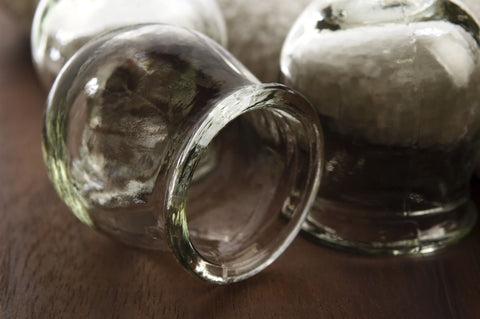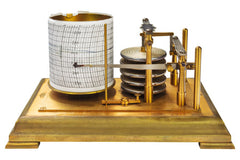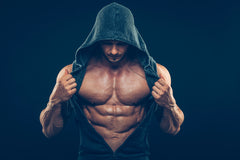
Olympic Cupping with Battle Balm®
6 min read

Introduction
It's taken a couple thousand years, but finally cupping has gone mainstream! Those spots on Michael Phelps, Alex Naddour, Ruta Meilutyte and other top level competing athletes are the marks of a therapy technique called stationary cupping, a practice that acupuncturists and Chinese medicine has touted for years...and years. Note that it is now being called by a more official sounding moniker of myofascial decompression (MFD) by some athletic trainers and physical therapists, yet it is the same thing.

A little background
Historically, just about every culture in the world has had some form of cupping in its medical toolbox. Believed to have originated with the Egyptians, cupping was used in treating headaches, abdominal discomfort, common cold, asthma, bronchitis, injuries, and muscular pain. All sorts of objects (bamboo, horns, etc.) have been used for cupping and different manipulation styles developed (stationary, sliding, fire, bloodletting, etc.).
Oh, the physics!
Imagine there's something called atmospheric pressure trying to squash your entire body all day long. Now, believe it. The weight of air is always pressing against our skin and measures approximately 15 pounds per square inch (at sea level). Cupping applies a negative pressure on the skin and soft tissue. This negative pressure, created by a vacuum in the cup, upsets the 15psi air pressure normally exerted on your skin. Of course, this pressure change is only happening directly under the cup. So, your body tries to equalize that pressure by pushing itself outwards, hence the ugly lump of flesh that rises inside the cup. Ok, the physics lesson is over.
We can't count or discount it in the lab, so is it pseudoscience?
Now, there are those that believe cupping works and those that don't. We're not going to get into that discussion here. We've done it. Countless times. We feel that it works well, especially on stubborn, tight muscles that don't respond well to other manual therapies such as massage, stretching, etc. Our own empirical evidence says that cupping temporarily relieves muscular pain and tension. It doesn't work for everyone because even though there could be similar symptoms between two people, different mechanisms of action may be at work. In fact, no treatment works for everyone. Cupping is cheap, so locate the tension in your body, go get a treatment on it (from a professional, preferably), and see for yourself.

Let us bore you with theory...
Since everyone has a theory, here's ours. Cupping moves body fluid. It must. Look at the marks it leaves on the skin. Something must be happening. Along with tissue being pulled up into the cup when suction is applied, blood and lymph must also be pulled up as well. One cannot happen without the other. You don't see a vampire worried that he's not going to get blood out on the first bite victim, do you?
The next part of our theory involves muscle tissue. Athletes have a higher amount of muscle tissue than the average lay person. Since muscle is more dense than fat, the heart has to effectively pump harder through muscle (minus all of the feedforward and feedback mechanisms inherent in the cardiovascular system). We're not going into all the awesome magic of the CV system and try to confuse you. We want to make it painfull simple. Try to pour water through a sponge. Now, pour it through a block of cement. Which one would more similarly resemble fat and which one would resemble dense muscle tissue? Don't you notice that more muscular people, in general, have more prominent veins on their skin? Sure, some of their noticeable vascularity is due to carrying a low body fat percentage. But, there's also another reason. It's EASIER for blood to travel around dense muscles than through it. Cupping must pull blood through some of the underlying muscle and up to the level of the epidermis. That's what leaves the characteristic skin bruises. There's no other way. And since blood carries nutrients, the cupping technique effectively pulls fresh nutrients into tight muscles. We believe that muscles are responding to forced blood and lymphatic flow due to the negative pressure of the applied cups. Still following us?
The last part of our theory is about something called fascia or myofascia, when discussing the tissue surrounding the muscles, which has only recently been "discovered" by medicine. It's like a wetsuit covering all of the musculature in the body. Well, it's more like stretchy pantyhose. Anyhow, this connective tissue allows for the gliding of muscles over one another and during movement, keeps everything in relative place so your muscles don't explode out of your skin. Myofascia does a whole lot more as it is also a network for communication and extracellular activity. It's still relatively under-understood. Yes, we just made a new word.

Nothing in the body runs optimally without maintenance
Now, what happens if the myofascia binds to the muscle due to an injury, surgery, or as a response to continued repetitive stress (like doing the back stroke in a pool every single day for 10 years straight)? Everything eventually starts to feel tight. A bound myofascia now starts to tug at connected musculature and that muscle responds by tugging back. All that tug-of-war can wreak havoc on the body. Doesn't this sound like it could lead to chronic knots and stubborn muscle tightness? This is not a stretch (pun here) of the imagination. Of course, it does.
We've found in our clinic that myofascial adhesions are one of the causes of chronic muscular and joint pain. No matter what the causal factor, at some point you will also begin to have limited range of motion and tightness due to myofascia not doing its job as essentially a glue (to hold muscles together and provide structural support/strength by grouping them) and as a grease (by allowing low friction pathways for soft tissue to interact over one another during movement). Fascia is amazing, isn't it? Now imagine cupping to be a way to apply pressure to skin, muscle, and myofascia in the opposite direction of the standard massage pressure to that same tissue. If you believed that massage therapy works, why wouldn't you believe that cupping works? (For every action, there is an equal and opposite reaction. - Newton's third law of physics) Something is happening, right?
If you're still reading at this point, then you'll know that this post is not a thorough double-blind clinical trial abstract of cupping with an 80 page conclusion. It's a fairly common sense explanation of cupping (myofascial decompression) and why WE believe it works. We specialize in pain management and our patients can attest to its efficacy, even without conclusive un-biased laboratory evidence. Athletes are using cupping in the 2016 Olympics in Rio. They are looking for optimal body performance and an edge in competition without the side effects of drugs or PEDs. Does that mean cupping works? It works for them. Whether you're a top athlete or not, if you've got muscular issues that are causing you chronic pain, maybe cupping can work for you.
A cupping demonstration
One of our partners, Ginger Martin, L.Ac., owner of True Health Acupuncture in San Diego, California, is seen here on a local TV station demonstrating cupping techniques. She uses Battle Balm for cupping her patients.
How does Battle Balm® play a part in the practice of cupping?
- Battle Balm® can provide a nice seal around the cups and is less messy than using oil with the cups.
- Battle Balm® contains natural vitamins and lipids that are healthy for skin repair after cupping techniques.
- Battle Balm® is antibacterial and antifungal (per USP51 specifications) and can greatly reduce chance of skin infection when used during cupping.
- Battle Balm® helps ease pain, facilitate blood circulation and promotes quicker recovery time between cupping sessions.
- Battle Balm® can be used for more than just cupping!

References:
Cupping - Wikipedia - https://en.wikipedia.org/wiki/Cupping_therapy
NY Times article - http://well.blogs.nytimes.com/2016/08/08/what-are-the-purple-dots-on-michael-phelps-cupping-has-an-olympic-moment/?_r=0
USA Today article - http://www.usatoday.com/story/sports/olympics/rio-2016/2016/08/08/how-cupping-works-and-why-olympic-athletes-use/88410804/
CBS News article - http://www.cbsnews.com/news/michael-phelps-cupping-rio-olympics-2016/
Lean body mass vs. fat in high blood pressure research article - https://www.sciencedaily.com/releases/2004/11/041123162138.htm
Exercise Hyperemia and regulation of tissue oxygenation during muscular activity research article - http://www.ncbi.nlm.nih.gov/books/NBK57139/#s4.8
Stock photography provided by 123RF. Historical drawing provided by wikipedia - F. Dekkers, Exercitationes practicae, Wellcome L0002320.jpg. Phelps diving image courtesy of: AL Bello/Getty ImagesLeave a comment
Comments will be approved before showing up.
Subscribe
Sign up to get the latest on sales, new releases and more …






